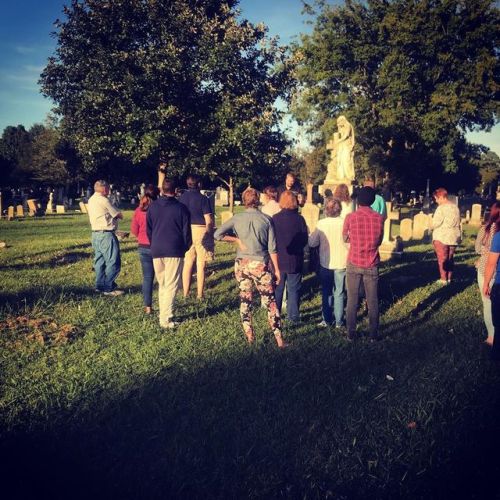#symbols
Hey! I’ve decided to share some of templates I’ve made to help with my artwork. These are all transparent and free to download and use, since making these was a pain. In order, the first sheet is the tattoos worn by the Romans with the symbols of their godly parents wrapped in a laurel wreath. I know a few of them do not have demigod kids, but the symbols are there in case you want another use for them. They’re for:
Neptune(Poseidon)Jupiter(Zeus)Pluto(Hades)Vulcan(Hephaestus)Venus(Aphrodite)Minerva(Athena)Mars(Ares)Apollo (Apollo…creative, I know) Mercury(Hermes)Bacchus(Dionisys)Diana(Artemis)Ceres(Demeter)Juno(Hera)BellonaandHestia.
I’ve also included a simple laurel wreath for if you want to make your own. Like, for legacies and stuff. The Camp Half Blood logo is also there, along with the SPQR for the Romans, which is often wrapped in a wreath. If you know someone who could benefit from these, please don’t hesitate to tag them or straight-up send it to them; just give credit where credit is due.
Post link
Nowy Sącz
ul. Nawojowska 25
dom z pierwszej połowy XX w.
foto z 10 kwietnia 2017
Na fasadzie jeleń Św. Huberta czyli godło Polskiego Związku Łowieckiego, którego zarząd okręgowy mieścił się tutaj do 2017 r.
><><><><><><><><><><><><><><><
Nowy Sącz, Poland
25 Nawojowska St.
hosue buit in the first half of 20th c.
taken on 10 April 2017
St. Hubert’s deer on the facade is the emblem of the Polish Hunting Association whose regional branch operated here until 2017.
Post link
HOMILY for the 4th Sunday per annum ©
Jeremiah 1:4-5,17-19; Ps 70; 1 Cor 12:31–13:13; Luke 4:21-20

This little statue of the infant Jesus that was carried up in procession just now looks familiar to our Western eyes as the Infant Jesus of Prague. But in fact this is a replica of the statue of the Infant Jesus enshrined in the city of Cebu in the Philippines, in that part of the Philippines where the Gospel was first preached 500 years ago. And this statue played a vital part in the evangelisation of the Philippines, which is why it is venerated and celebrated at this time of the year during the extended Christmas season. But it’s striking that these images of the Holy Child Jesus, the Santo Niño, always show him dressed in the splendid robes and jewelled cape with an exaggerated crown.
You may know the joke about Our Lady saying to the Infant Jesus of Prague: “Where are you going?” And Jesus says he’s going out to play with his friend. And Our Lady says: “You’re not going out dressed like that!” To our English sensibilities, there’s something too ostentatious about these images of Jesus. And yet, these images have profound theological meaning, and so we should consider why Jesus is shown like that.
After all, in the Gospel today, the people of Nazareth, Jesus’s own hometown, exclaim: “This is Joseph’s son, surely?” But the way that the Infant Jesus of Cebu or Prague is dressed says otherwise. No mere son of Joseph the carpenter would be dressed like that. Even if we argue that Joseph is descended from the royal line of David, nevertheless, Jesus isn’t dressed simply as a prince. The imperial crown on his head, and the sceptre in his hand, and the exaggerated regal robes all provoke us to consider his true identity. Jesus is not justthe son of Joseph. So, these external signs, these ornamentations, are meant to point us to a deeper truer identity than that which is immediately apparent to us.
For when we speak of spiritual realities, of the deep metaphysical nature of things, we have to do so using external material signs. Hence this church is built and adorned in such a way as to point us beyond the purely functional and apparent. For the church is not just a space for a gathering of the Christian people, and the Mass is not just a community celebration, and the Eucharist is not merely bread. Rather, we place the Eucharist in a golden monstrance on the Altar, and we light candles and sing and kneel during the Mass, and we enrich this Sanctuary with art and gold leaf and mosaics and statues and stained glass – all in order to say that, in fact, in truth, God is with us, here in this place, here in this Sacrament, in his holy Church.
For as St Paul says: “Now we are seeing a dim reflection in a mirror”. That is to say, right now in this life, we do not clearly perceive heavenly realities, and all the things we use to help us, like the clothing worn by the Santo Niño of Cebu is just a “dim reflection” of the true glory, the true beauty that comes from the person of Jesus Christ. The glory and majesty and beauty of Christ is found in the reality of who he is: He is infinite Love made visible and contained in one person. And St Paul beautiful expands on how God loves us: “Love is always patient and kind; it is never jealous; love is never boastful or conceited; it is never rude or selfish; it does not take offence, and is not resentful. Love takes no pleasure in other people’s sins but delights in the truth; it is always ready to excuse, to trust, to hope, and to endure whatever comes.”
And so this child Jesus will grow, and he will be chased out of his own hometown by a murderous mob, as we hear in today’s Gospel, and he will be framed by the Jewish religious authorities in Jerusalem, condemned by the Gentile Roman powers of his time, and then he would be abandoned by his friends, and executed on a hill outside the walls of the holy city, out in the wilderness above a rubbish dump. And yet as he enters his passion and death on the Cross, Jesus declares: “Now the hour has come for the Son of Man to be glorified” (Jn 12:23) Why? For Christ’s sacrificial death on the Cross is the deepest sign of God’s saving love for sinful humanity.
For, unlike every other human being, the Holy Child Jesus, being both God and Man, suffers and dies not because he has to but because he freely chooses to. As he says in St John’s Gospel: “No one takes [my life] from me, but I lay it down of my own accord. I have power to lay it down, and I have power to take it again.” (Jn 10:18) So, externally, based on what we can see, it looks like Jesus dies like all of us must, forced to do so as we will be. But the reality is that Christ, perfectly innocent from sin as he is, chooses to suffer and die so as to redeem us from the shame and pain and punishments that are ours because of sin. Hence, Love “endures all things”, even death on a Cross, for our sake, for the salvation of sinners, becoming one with us. Thus, the Cross shines forth with a mystical splendour, and we try and show the beauty and majesty of God’s Love made visible through the golden crosses and beautiful Crucifixes that adorn our churches and that we might wear on a gold chain around our necks. Today’s Gospel reminds us that Christ also endures the isolation and loneliness of being misunderstood by his relatives, rejected by his own community, and driven out into the wilderness – all for the sake of loving us, of being with us, who also experience such difficulties. For the deepest metaphysical reality of all is the imminence and presence of God with us, and this is the heart of Christian mystery, the heart of the Love that we proclaim and believe as Christians.
Because the world around us often says: “There is no God”, and so we human beings are all alone, bereft of any help save that which we can provide ourselves. Our peers see only darkness and uncertainty, and so they cling to the pleasures that this world can bring, sometimes through good things like friendship and family, but often through escaping into the dead-ends of drugs, drink, sexual pleasure, and so on. Ours is a world that is in despair because it believes that God has abandoned us. But, as St John says, “The light shines in the darkness, and the darkness has not overcome it.” (Jn 1:5)
So, you will have noticed that here in this church, we keep the Christmas lights, that beautiful star lantern (or parolfrom the Philippines) shining for longer than most other places. Because we want to recall that in fact God is with us, and he has not abandoned us. Rather, his love remains shining for us, if we have but eyes to see, and faith to know and receive him. So St John says: “He was in the world, and the world was made through him, yet the world knew him not. He came to his own home, and his own people received him not. But to all who received him, who believed in his name, he gave power to become children of God” (Jn 1:10-12). So the Holy Child Jesus whom we honour today has come to make us children of God: he desires to make his home in us through grace, through Holy Communion, so let us be ready to welcome him, dancing and singing our songs to receive him with joy!
And so the singing and celebrations tonight, and the shared meal that we have in the Hall afterwards, are all external signs to proclaim the deep reality of God’s presence, God’s love among us, here and today. God is with us, and through these external signs and symbols, we Christians show forth the interior reality of God’s love for you and for me and for anybody who chooses to join us; a love that, as St Paul says, “does not come to an end”.
sometimes i think i feel a connection to the depiction of stars ,flowers, sun, moon, etc instead of the reality of them. Like, the shapes they are drawn as. this isnt the most desirable thing,i want to connect with the real thing also, but theres somethign so inexplicable about the um,the shapes in which we simplify like., You know like symbols.
Like theres something so wonderful about this heart shape: and it can take so many shapes and expressions and different character/personality depending on how its drawn and stuff.its crazy .and its not even what an actual heart organ looks like! What the hell..
By Oliver KMIA
Had a fun, nerdy time going on the Norfolk Society for Cemetery Conservation’s Art of Death Tour! I learned a lot about my favorite walking spot and some interesting things about Victorian symbology.
#elmwoodcemetery #norfolksocietyforcemeteryconservation #cemeterytour #headstone #headstoneart #victorian #symbols #artofdeath #norfolkva (at Elmwood Cemetery)
https://www.instagram.com/p/B2p16qphh4s/?igshid=sf5jg8nq8r3t
Post link








